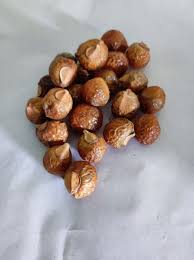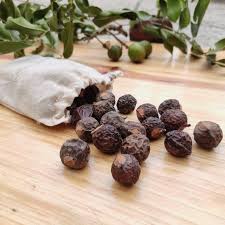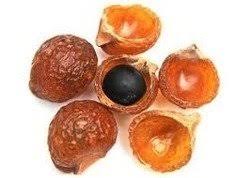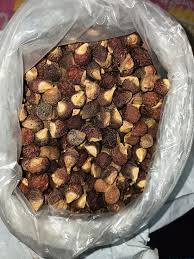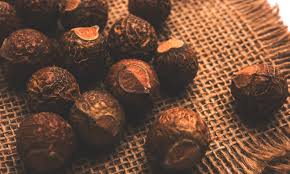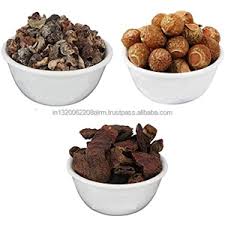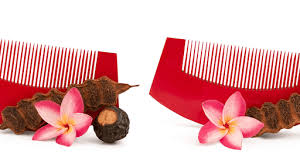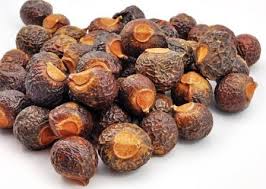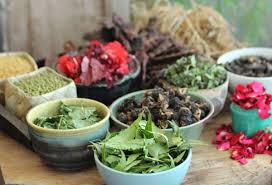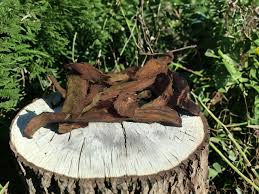How Kaali Haldi Balances Your Doshas (Vata, Pitta, Kapha)
Ayurveda, the ancient Indian science of holistic healing, believes that every individual’s health is governed by a unique balance of three doshas—Vata, Pitta, and Kapha. These doshas represent biological energies derived from the five elements (earth, water, fire, air, and space) and control all physical and mental processes in the body.
When these doshas are in harmony, we experience optimal health. However, an imbalance can lead to various health issues, such as digestive disorders, skin problems, stress, fatigue, or even chronic diseases.
One of the lesser-known but powerful herbs in Ayurveda for dosha balancing is Kaali Haldi (Black Turmeric). Known for its anti-inflammatory, detoxifying, and energetic properties, Kaali Haldi is used in traditional healing practices to restore equilibrium among the three doshas.
In this article from dirghaanshi, we will explore how Kaali Haldi works within Ayurvedic principles to balance Vata, Pitta, and Kapha, and how you can integrate it into your wellness regimen for holistic healing.
Long Description: Understanding How Kaali Haldi Balances Vata, Pitta, and Kapha Doshas
- What are the Doshas in Ayurveda?
Before we understand how Kaali Haldi helps, let’s quickly recap the doshas:
Dosha Elements Qualities Governs
Vata Air + Space Dry, light, mobile Movement, circulation, nervous system
Pitta Fire + Water Hot, sharp, intense Digestion, metabolism, transformation
Kapha Earth + Water Heavy, stable, cool Structure, immunity, lubrication
Everyone has all three doshas, but in varying proportions. Health is achieved when your prakriti (natural dosha constitution) is in balance with your vikriti (current state).
- Introduction to Kaali Haldi (Black Turmeric) in Ayurveda
Kaali Haldi (Curcuma caesia) is a rare and potent root used in Ayurveda and tribal healing. It differs from yellow turmeric by:
Its bluish-black color
Strong earthy aroma
Powerful anti-inflammatory and detoxifying properties
In Ayurveda, it is described as:
Rasa (Taste): Tikta (bitter), Katu (pungent)
Virya (Potency): Ushna (heating)
Vipaka (Post-digestive effect): Katu (pungent)
These properties make Kaali Haldi effective for reducing Kapha and Vata while moderating Pitta, depending on how it is used.
- Kaali Haldi for Balancing Vata Dosha
Vata governs movement, nervous system activity, circulation, and respiration. When out of balance, it leads to:
Anxiety, restlessness
Dry skin and hair
Constipation
Joint pain and poor circulation
How Kaali Haldi Helps Vata:
Ushna virya (warming effect) counters Vata’s cold and dry nature
Improves blood flow and reduces joint stiffness
Its grounding nature calms the nervous system
Helps restore lubrication to joints and skin
Best Ways to Use for Vata:
In warm oil massages with sesame oil
As a paste applied to stiff joints
In warm herbal teas with cinnamon and ginger (consult an Ayurvedic practitioner)
- Kaali Haldi for Balancing Pitta Dosha
Pitta controls digestion, metabolism, and temperature regulation. An imbalanced Pitta can result in:
Inflammation, acidity, ulcers
Skin rashes, acne, sensitivity
Anger, irritability, impatience
How Kaali Haldi Helps Pitta:
Although Kaali Haldi has a heating potency, when used correctly, it helps reduce internal inflammation and cools excess fire:
Acts as a natural anti-inflammatory, reducing skin and gut inflammation
Detoxifies the liver and blood, reducing Pitta-related toxicity
Clears heat from the skin (when applied externally)
Stabilizes excess emotional energy by grounding fire element
Best Ways to Use for Pitta:
Externally, as a paste with aloe vera or sandalwood
Internally, in small doses with cooling herbs like amla or guduchi
As a scalp and skin cleanser for acne and rashes
- Kaali Haldi for Balancing Kapha Dosha
Kapha governs structure, immunity, and lubrication. When Kapha is out of balance, symptoms include:
Lethargy, brain fog
Weight gain and water retention
Mucus buildup, sinus issues
Depression and attachment
How Kaali Haldi Helps Kapha:
Kaali Haldi’s bitter and pungent tastes, along with its warming energy, make it very effective in reducing Kapha accumulation:
Dries excess moisture and mucus from the body
Stimulates metabolism and fat digestion
Boosts circulation and energy, countering sluggishness
Clears sinus congestion and enhances mental clarity
Best Ways to Use for Kapha:
In steam inhalations or warm compresses
As a decoction with black pepper, tulsi, and cinnamon
Applied to chest or sinuses in infused oils
- Ayurvedic Formulations with Kaali Haldi for Dosha Balancing
Here are some time-tested ways to incorporate Kaali Haldi into your dosha-balancing routine:
a) Kaali Haldi Abhyanga (Massage Oil)
For Vata + Kapha:
Kaali Haldi infused in warm sesame or mustard oil
Apply to joints, back, and scalp for nourishment
b) Kaali Haldi Herbal Churna
For Pitta + Kapha (with guidance):
Mix Kaali Haldi with amla, trikatu, and guduchi
Take in small pinches before meals with honey or ghee (consult expert)
c) Kaali Haldi Detox Tea
Boil Kaali Haldi, tulsi, black pepper, and cinnamon in water
Strain and sip warm for detox and dosha harmony
Best taken during seasonal transitions or post-illness
d) Kaali Haldi Ubtan (Paste for Skin)
For Pitta and Kapha: Mix with neem, rose water, and multani mitti
Apply to skin for detox and heat-clearing
- Scientific Backing for Dosha-Specific Effects
Modern research supports Kaali Haldi’s Ayurvedic uses:
Anti-inflammatory: Helps manage arthritis, gut issues
Antimicrobial: Effective against bacterial and fungal infections
Antioxidant: Supports cellular repair and detoxification
Nootropic potential: Improves focus and mental clarity (great for Kapha/Vata imbalance)
These align with traditional applications in reducing dosha-based symptoms.
- Precautions and Guidelines
Though natural and effective, Kaali Haldi must be used mindfully:
Always do a patch test for skin use
Avoid excess internal use without Ayurvedic supervision
Not recommended for pregnant or lactating women without guidance
Store in a cool, dry place away from sunlight
- Seasonal and Dosha Tips
Season Dominant Dosha Kaali Haldi Use
Vata (Autumn/Winter) Vata increases Warm oil massages, joint pain remedy
Pitta (Summer) Pitta increases External pastes, cooling combinations
Kapha (Spring) Kapha increases Decoctions, steam, sinus detox
Adjust your Kaali Haldi usage based on the seasonal dosha dominance for best results.
Conclusion
In Ayurveda, true healing happens when we treat not just the symptoms, but the energetic imbalances that cause them. Kaali Haldi, with its bitter, pungent, and heating properties, offers a versatile solution for balancing all three doshas—when used thoughtfully.
Whether you’re struggling with dryness, sluggish digestion, inflammation, skin problems, or mental fatigue, Kaali Haldi can help restore balance at the physical and energetic levels.
At dirghaanshi, we believe in reviving the forgotten power of traditional jadi buti. Kaali Haldi isn’t just a rare root—it’s an ancient remedy that connects us to the deeper wisdom of our body and nature. Incorporate it mindfully, and experience a life more balanced, vibrant, and aligned with your Ayurvedic constitution.


